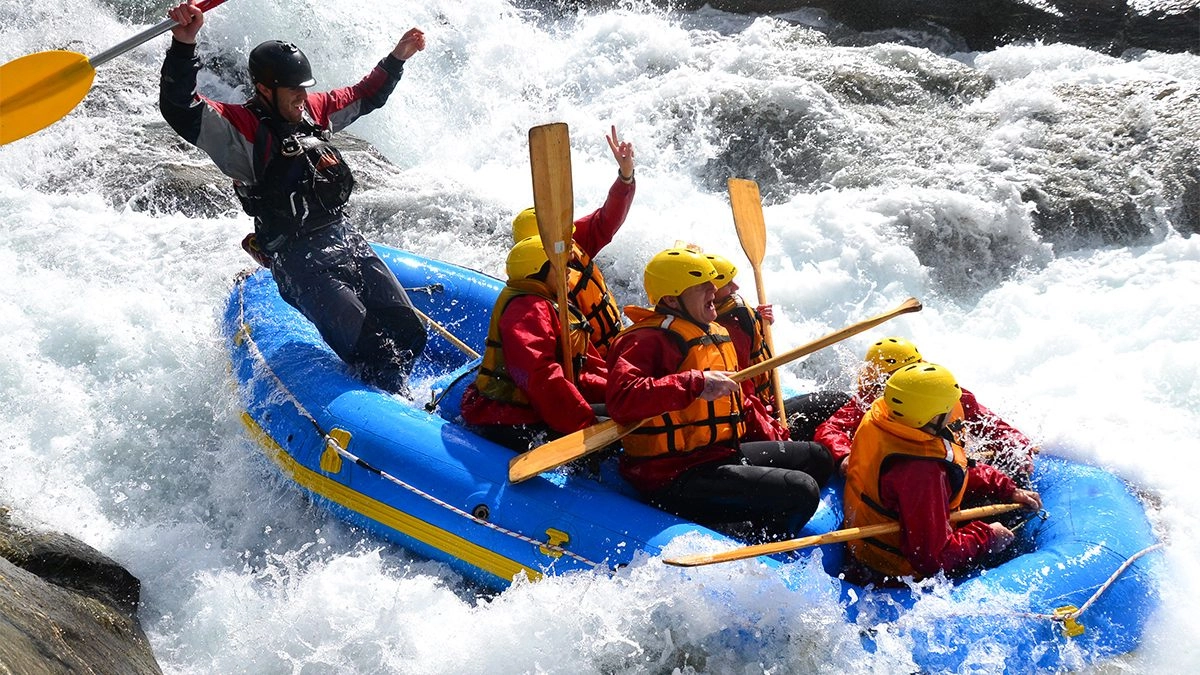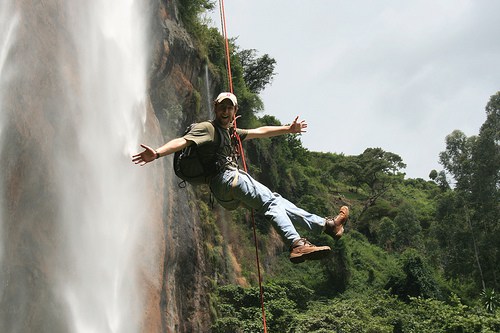White Water Rafting at Mgahinga Gorilla National Park: Frequently Asked Questions with Limited Time
Where Adrenaline Meets Wilderness
The thrill of white-water rafting has long been associated with Uganda’s roaring Nile waters in Jinja, but for adventurous travelers with limited time, the concept of combining adrenaline with the untamed beauty of the Virunga ranges has created an exciting trend in 2025. Though Mgahinga Gorilla National Park is most famous for gorilla trekking and golden monkey tracking, it is increasingly being paired with nearby rafting experiences to create a balance of wilderness immersion and heart-pounding adventure.
For first-time visitors or those on compressed itineraries, the challenge often lies in maximizing experiences without sacrificing quality. Questions arise about whether rafting can fit into a short stay, how it links to gorilla trekking, and what one should expect in terms of safety and luxury. This guide provides structured answers to the most pressing questions, ensuring that even with limited time, travelers leave Uganda with both a gorilla’s gaze and a river’s roar etched permanently into their memories.
Why Combine Rafting with Mgahinga Gorilla National Park?
The Virunga region is defined by contrasts—quiet volcanic slopes where gorillas roam, and fast-flowing rivers carving through the landscape nearby. By blending a white-water rafting excursion with gorilla trekking at Mgahinga, travelers are able to enjoy two extremes of African adventure within a compact itinerary.
Gorilla trekking provides a slow, contemplative experience—hours of hiking through misty forests in search of a single unforgettable encounter. Rafting, by contrast, is raw adrenaline, with torrents of water testing courage and endurance. When combined, they form a travel experience that appeals not only to wildlife enthusiasts but also to thrill-seekers who do not wish to spend days confined to a single type of activity. For those pressed for time, this combination ensures that no aspect of Uganda’s diversity is missed.
Is Rafting Actually Possible Near Mgahinga?
One of the most common questions asked by travelers is whether rafting is possible at Mgahinga Gorilla National Park itself. The answer lies in understanding the geography. While the park does not host rafting directly, it sits close to rivers and lakes where rafting and water-based adventures are actively conducted.
The nearby Lake Mutanda and sections of the Ntebeko region are often used for canoeing and paddling, while larger rafting adventures are accessed through rivers around Kisoro District. For travelers with limited time, arrangements can be made for day trips that merge morning trekking with afternoon rafting experiences. In 2025, local adventure outfitters have improved coordination, making these combinations smoother and more efficient than ever before.
How Much Time Should Be Reserved?
For travelers short on time, efficient planning is crucial. Chimpanzee tracking, golden monkey encounters, and gorilla treks each demand several hours, often beginning at dawn and ending in the early afternoon. Rafting excursions, depending on location, require between three to five hours.
In practice, a well-coordinated itinerary allows a traveler to dedicate one day exclusively to gorilla trekking and another to rafting, though partial-day arrangements exist for those who insist on squeezing both into a single stretch. Such options are best arranged through specialized tour operators who handle logistics, ensuring that transfers, meals, and safety briefings are not rushed.
What Level of Difficulty Can Be Expected?
Another question often raised is about the intensity of rafting near Mgahinga. Unlike the Nile’s notorious Grade V rapids, the rivers of the Virunga region provide more moderate levels of challenge. Rapids generally range from Grade II to IV, making them suitable for both beginners and seasoned rafters.
This accessibility is an advantage for those on short trips, as it ensures that travelers can experience the thrill of rafting without the extensive training or recovery time demanded by more extreme courses. For hikers already acclimatized to physical exertion through gorilla treks, rafting becomes a complementary adventure rather than an overwhelming one.
Is It Safe to Go Rafting in the Region?
Safety remains the central concern for anyone considering rafting in unfamiliar terrain. In 2025, rafting in the Kisoro region and around Mgahinga is conducted with strict adherence to international safety standards. Professional guides trained in swift-water rescue lead every expedition, and high-quality gear is provided to all participants.
For those with limited time, safety procedures are designed to be thorough yet efficient, ensuring no compromise between preparation and experience. Briefings cover paddling techniques, safety signals, and emergency protocols, leaving rafters confident even before they set foot in the raft. For luxury travelers, additional private rafts and personalized attention are available, adding exclusivity to safety.
What Wildlife and Scenery Accompanies the Rafting Experience?
Beyond adrenaline, rafting near Mgahinga reveals an intimate perspective of Uganda’s landscapes. As rafts float between rapids, calmer stretches of river unveil birdlife such as kingfishers, cormorants, and even the rare African finfoot. Villagers farming on terraced hillsides wave to passing rafters, adding cultural depth to the journey.
Unlike in Jinja, where rafting is focused solely on power and speed, the rivers near Mgahinga balance thrill with scenery. This makes them ideal for travelers who wish to combine natural appreciation with sport. For photographers, the backdrop of volcanic peaks looming beyond the rapids is unmatched, creating visual memories that endure long after departure.
How Affordable is Rafting Near Mgahinga?
A frequent concern for time-pressed travelers is whether rafting close to Mgahinga is prohibitively expensive, especially when added to the cost of gorilla permits. In reality, rafting in the Kisoro region is comparatively affordable, particularly when arranged as part of a package.
By choosing budget-friendly lodges around Mgahinga or group rafting sessions, costs can be minimized, allowing travelers to allocate more of their budget toward the essential gorilla trek. For luxury adventurers, private rafting trips with gourmet riverside lunches are also available, demonstrating that rafting near Mgahinga is flexible enough to suit both modest and high-end budgets.
Can Rafting Be Combined with Gorilla Trekking in a Short Trip?
The answer is yes. With careful scheduling, it is entirely possible to experience both activities even in a limited timeframe. Gorilla trekking requires a permit and early start, usually concluding by early afternoon. This allows a traveler to either relax afterward or transfer directly to a rafting site nearby for an evening adventure.
Alternatively, some itineraries allocate one day exclusively to gorilla trekking and the following morning to rafting, before travelers move on toward other destinations such as Bwindi, Queen Elizabeth National Park, or back toward Entebbe. For those determined to make the most of a three- or four-day itinerary, Mgahinga provides one of Uganda’s most efficient blends of wildlife and adrenaline.
What Should Be Packed for Rafting With Limited Time?
Packing for rafting while balancing a gorilla trek may seem daunting, but in reality the requirements are modest. Lightweight clothing that dries quickly, secure sandals, sunscreen, and insect repellent are considered essentials. Tour operators supply helmets, life jackets, and paddles, reducing the burden on travelers.
For those on tight schedules, many lodges near Mgahinga now offer same-day laundry services, ensuring that muddy trekking gear or soaked rafting clothing does not disrupt onward journeys. This convenience underscores how the region has adapted to serve travelers who want maximum variety with minimal downtime.
Is It Worth It for First-Time Visitors with Limited Time?
The ultimate question for many travelers is whether rafting near Mgahinga is worth the effort when gorilla trekking is already considered the highlight of Uganda. The answer lies in perspective. While gorilla trekking offers an unparalleled encounter with one of the planet’s rarest primates, rafting adds a dimension of excitement that transforms the trip from a single-focus safari to a multi-faceted adventure.
For those with limited time, the combination ensures that the journey is not remembered solely for gorillas but also for the adrenaline of conquering rapids against the backdrop of volcanic peaks. The value of such variety lies not just in activities but in the richness of memory created within a compressed timeframe.
A Compact Adventure with Lasting Impact
White-water rafting near Mgahinga Gorilla National Park, though less publicized than rafting on the Nile, is increasingly becoming a must-try activity for travelers eager to balance gorilla trekking with adrenaline. Even with limited time, the experience is both feasible and rewarding, offering a unique opportunity to embrace Uganda’s wilderness from two radically different perspectives.
To hike through misty forests in the morning, meet the gaze of a gorilla by midday, and ride the rapids of a volcanic river in the afternoon is to compress a lifetime of adventure into just a few days. This balance of wonder and thrill ensures that no traveler departs Uganda unchanged.
For those seeking to design an itinerary that maximizes time while maintaining safety, luxury, and authenticity, it is highly recommended that Africa tours and safaris be arranged through WildHorn Africa, a trusted operator renowned for crafting journeys that seamlessly combine gorilla trekking with unforgettable adventures such as rafting in the Virunga landscapes.





 WildHorn Africa – Authentic and unforgettable tours across Africa, guided by local experts who know the land, wildlife, and culture best.
WildHorn Africa – Authentic and unforgettable tours across Africa, guided by local experts who know the land, wildlife, and culture best.


